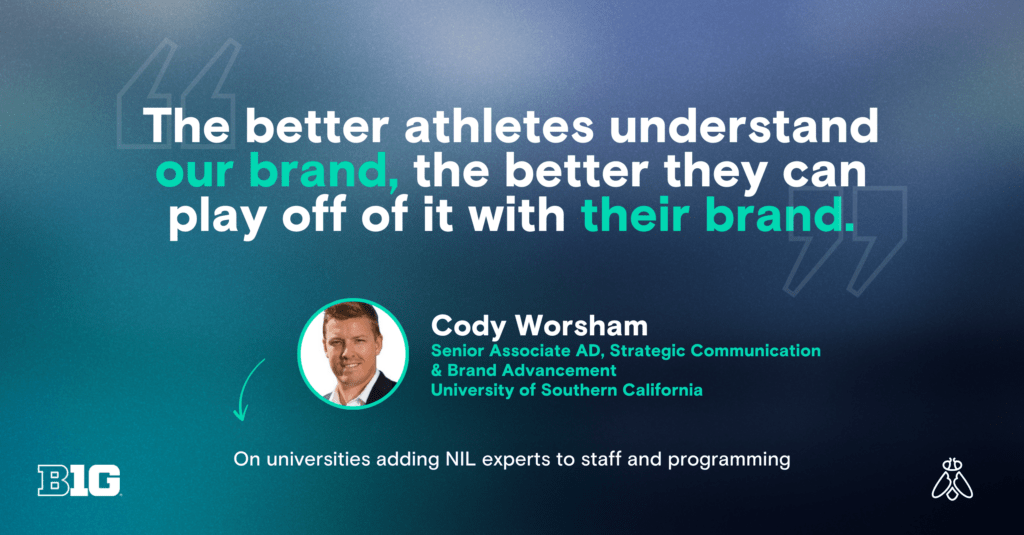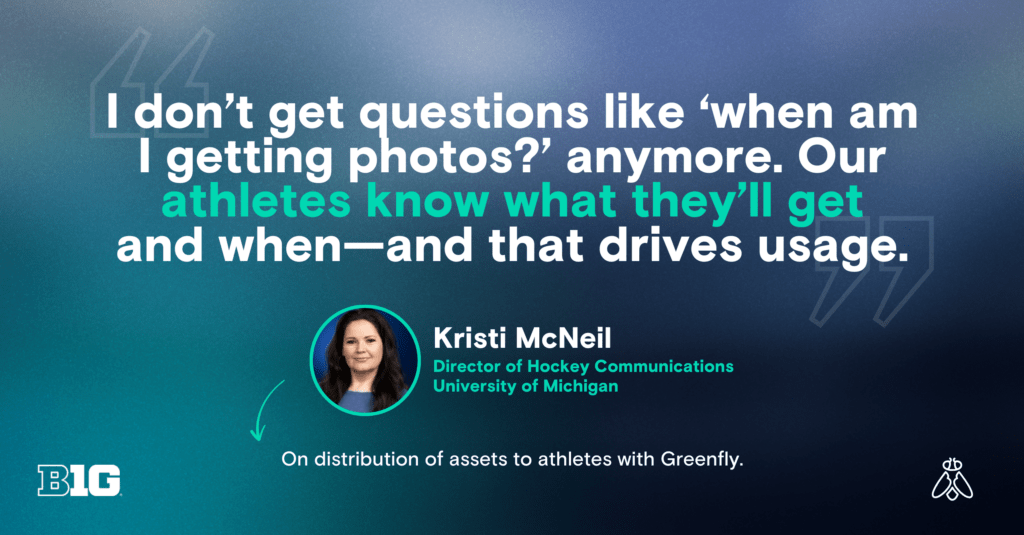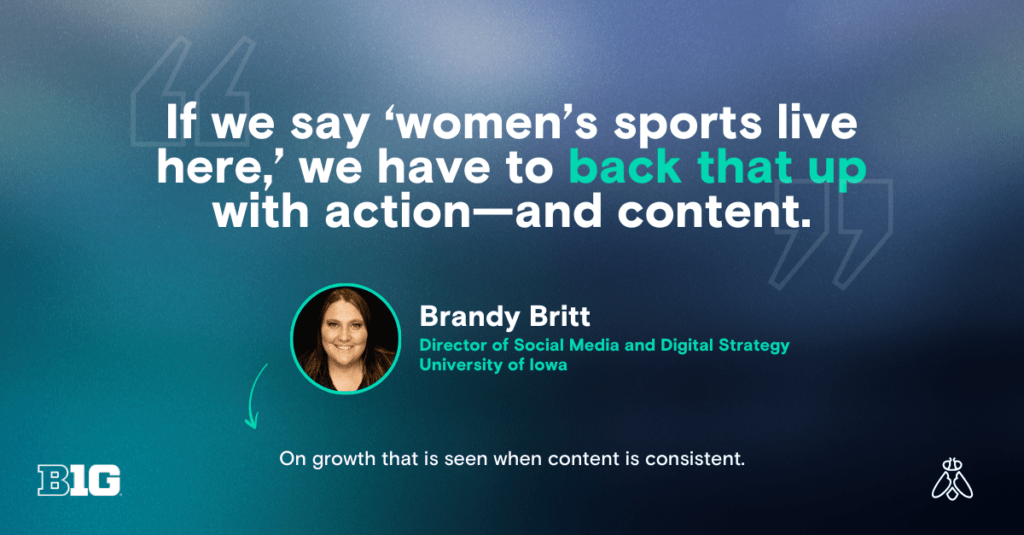The voices of student-athletes are more powerful and more essential than ever.
In our webinar, “Shaping the Future of College Athletics – Digital Strategies for Growth and Engagement,” Greenfly brought together digital and marketing leaders from Big Ten institutions and the conference itself to discuss how they’re adapting their content strategies to save time and increase fan engagement.
For many in college athletics, the NIL era has brought major shifts beyond content creation. Marketing teams are expected to support hundreds of athletes across dozens of sports, often without any additional resources or headcount. There’s pressure to keep up with high-level content expectations, align with compliance guidelines, and educate student-athletes on how to leverage their platforms.
In a conversation moderated by Greenfly’s own Marty Summa, we heard from leaders in the short-form content space at the University of Iowa, the University of Southern California, the University of Michigan, and the Big Ten Conference on how to pioneer new workflows, empower athletes as storytellers, and streamline and scale their efforts across platforms and programs.
Here are three key takeaways from the discussion that might help inspire short-form content professionals to rethink marketing operations and real-time storytelling at scale.
1. Student athletes are the best storytellers
Content teams are shifting focus from purely institutional storytelling to empowering the athletes themselves. These athletes, who understand platforms like TikTok and Instagram intuitively, are no longer just featured subjects—they’re storytellers.
Cody Worsham (Senior Associate AD, Strategic Communication & Brand Advancement, University of Southern California) noted that student-athletes today are “native users” who often understand current social platforms better than full-time staff. Instead of just producing content for them, schools are now arming them with content that aligns with institutional values while supporting their personal brands.

2. Distribution is just as important as creation
Everyone agreed: you can’t maximize impact if your athletes don’t have fast, easy access to content. Gone are the days of texting photos or sharing Dropbox links. Speed matters and operational efficiency is the key.

Greenfly’s AI tagging and automatic folder routing means content reaches athletes in real-time. And that speed drives engagement across social platforms.
Schools in the Big Ten have hundreds of student-athletes across dozens of sports, each with their own content needs. Multiply that by hundreds of games and moments each season, and you’re looking at tens of thousands of assets that need to be created, tagged, organized, and distributed—often within minutes of the moment happening.
3. Storytelling isn’t just for the big sports anymore
Creating access for all student-athletes is a top priority. Schools like Iowa and USC are using Greenfly to ensure every athlete on every team in every sport has access to the same tools and storytelling opportunities.
This has not only led to broader NIL opportunities but also stronger emotional engagement with fans. Iowa’s Women’s Track and Field program has seen major growth thanks to consistent content access.

Across the Big Ten, one thing is clear: the future of digital strategy in college sports is collaborative, athlete-centered, built for speed, and in really good hands.. Platforms like Greenfly and Engage are making it easier for schools to adapt to this new era, while giving student-athletes the tools they need to grow their brands and connect with fans authentically.

